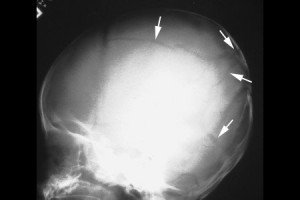The information for this topic is taken from a recent comprehensive review (August 2012) that appeared in www.UpToDate.com. Bartshealth employees can access the full text via a link from the intranet.
Ingested foreign bodies (UptoDate.com article, August 2012)
Coins — Coins are by far the most common foreign body ingested by children. Approximately two-thirds of ingested coins are in the stomach by the time of x-ray but those that lodge in the oesophagus for 24 hours after ingestion may need to be removed endoscopically as only 20-30% of these will pass into the stomach on their own. Coins that reach the stomach can be managed expectantly, and most will be passed within one to two weeks. A child who develops any signs or symptoms of obstruction, abdominal pain, vomiting, or fever, needs to come back to the ED urgently.
Button batteries — ingestions of “button” batteries are increasing and are associated with significant morbidity. Animal studies have demonstrated mucosal necrosis within one hour of ingestion and ulceration within two hours, with perforation as early as eight hours after ingestion. It may be difficult to differentiate between a disk battery and a coin on a radiograph. This distinction is most important when the foreign body is in the oesophagus, since batteries require immediate removal whereas coins may not.
Magnets — also increasing. Many of the children with complications from multiple magnet ingestion had underlying developmental delay or autism. In one case, an older child inadvertently swallowed these magnets while using them to imitate a pierced tongue. Two or more strong magnets, especially if ingested at different times, may attract across layers of bowel leading to pressure necrosis, fistula, volvulus, perforation, infection, or obstruction. Radiographs of the neck and abdomen should be performed, including a lateral view. X-rays cannot usually determine whether bowel wall is compressed between the magnets, although the finding of magnets that appear to be stacked but are slightly separated is suggestive. Management depends on the number, location and type of magnets, and on the timing of the ingestion. Ingestion of a single magnet can generally be managed conservatively with serial radiographs while multiple magnets need removing. Laxatives may help with faster bowel emptying if they are not in a place easily accessible with the endoscope.
References at www.uptodate.com.









